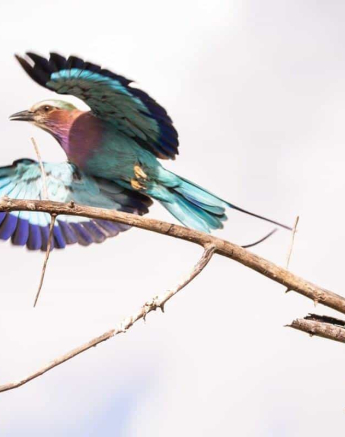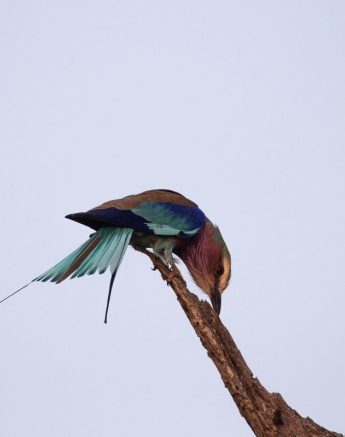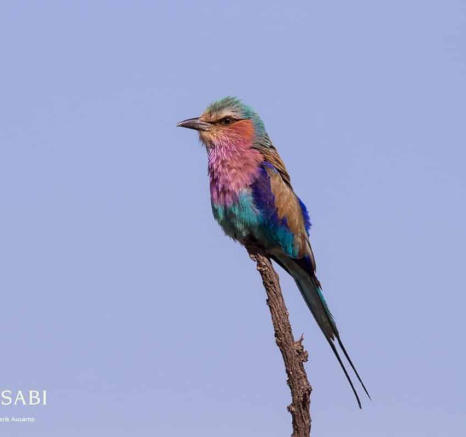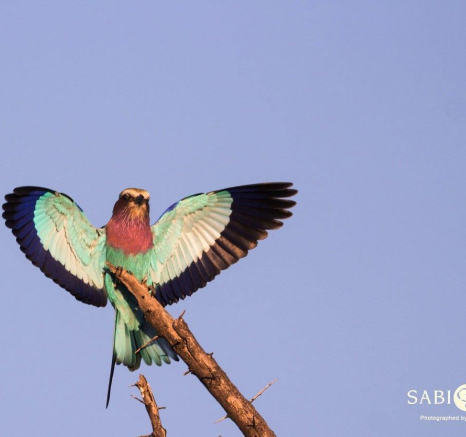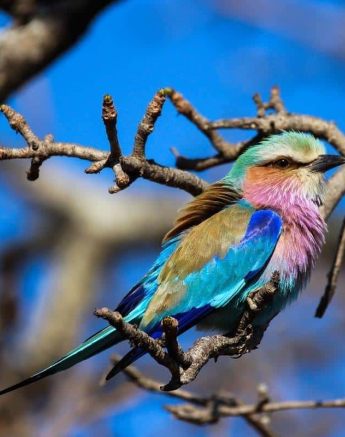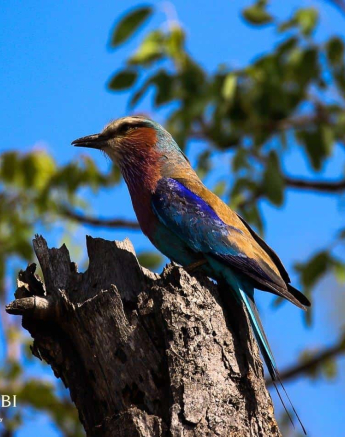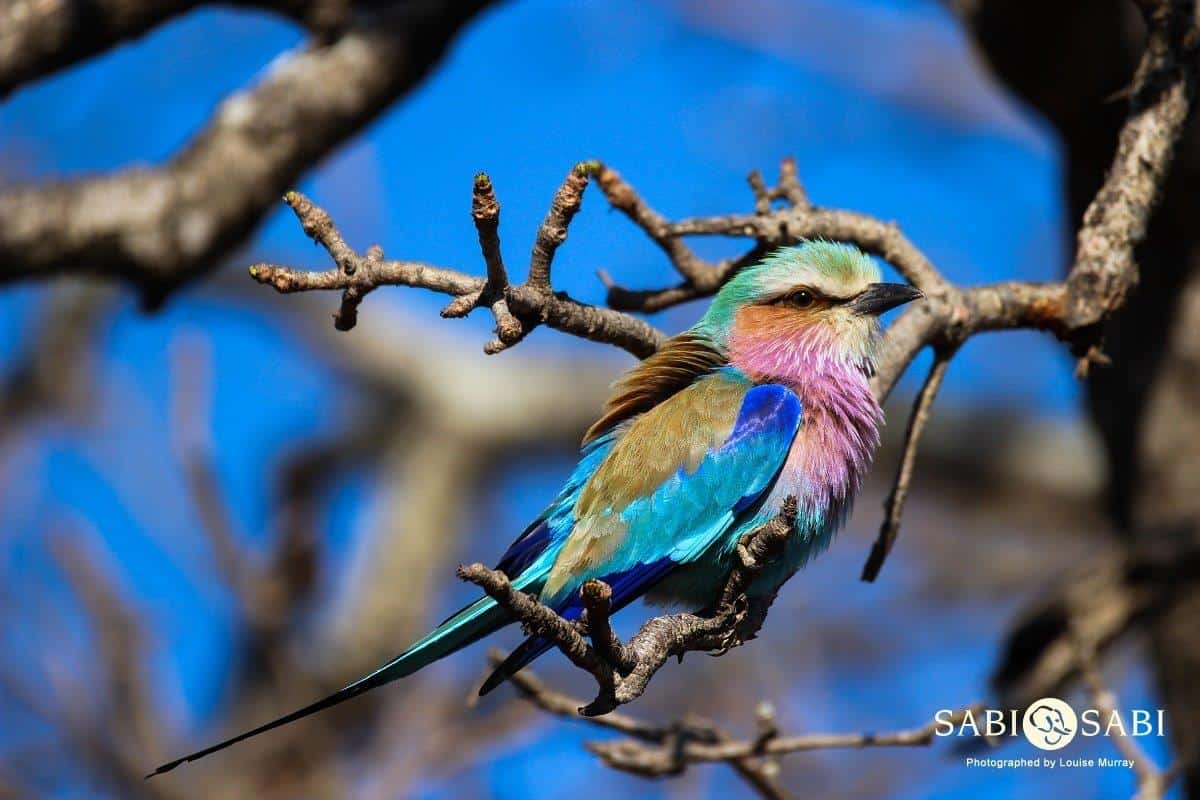Lilac-breasted Roller
on Jul 12, 2019Species name: Lilac-breasted Roller
Scientific name: Coracias caudatus
Weight: 104 grams
Size: 38 centimeters
General habitat: Open savannah habitats with scattered trees and shrubs
Diet: Grasshoppers, beetles, occasionally lizards, crabs and small amphibians.
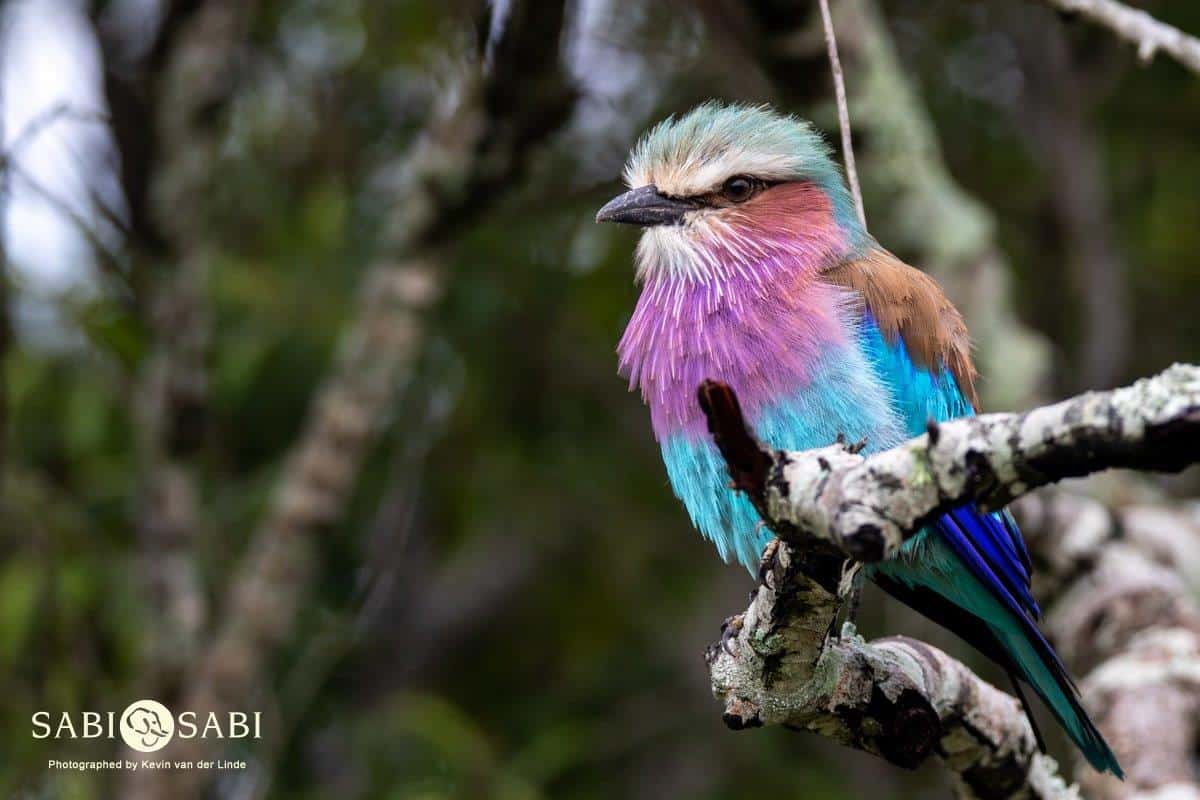
No matter how little interest a person might have in birds, the Lilac-breasted Roller will draw the attention of any guest on safari. With electric blue wings in flight and an array of 7 colours while perched on a tree, they are hard to ignore. The Lilac-breasted Roller is found throughout our reserve so you will be sure to see one during your stay with us.
The Roller gets its name from the aerial display it does during the breeding season to attract mates in which it flies to a high elevation then stoops down while rolling from side to side while producing a loud harsh call. Rollers are highly territorial, and they are also thought to be monogamous. Breeding season for Rollers is from May to mid-September but may vary depending on location. The species makes their nests in tree holes, as well as in termite mounds. They may also make use of unoccupied or abandoned Woodpecker or Kingfisher’s nest holes. Both males and females incubate the 2 – 4 eggs which are laid.
While out on safari, the Lilac-breasted Roller is generally seen perched on a small tree where it scans the ground for a potential meal. They will also be in close proximity to animals walking through the grass where they will catch any insects that are flushed out from the disturbance or around bush fires where insects will be trying to escape the flames.
My Memorable Sighting
I was sat out in an open field with a few large dead trees in the vicinity when suddenly the unmistakably loud screech of a Lilac-breasted Roller filled the air. I saw a Roller perched on one of the dead trees and got out my binoculars. I noticed that there was a hollow cavity beneath where it was sitting so assumed it must have had a nest in it. A few minutes later an African Harrier Hawk started approaching but it was not going to be an easy task to raid the Roller’s nest. The Roller took to the skies and kept mobbing the Harrier Hawk. After a few minutes the Harrier Hawk decided it was not worth the effort and took off as both Rollers had now come to guard their nest.
Photo Content
